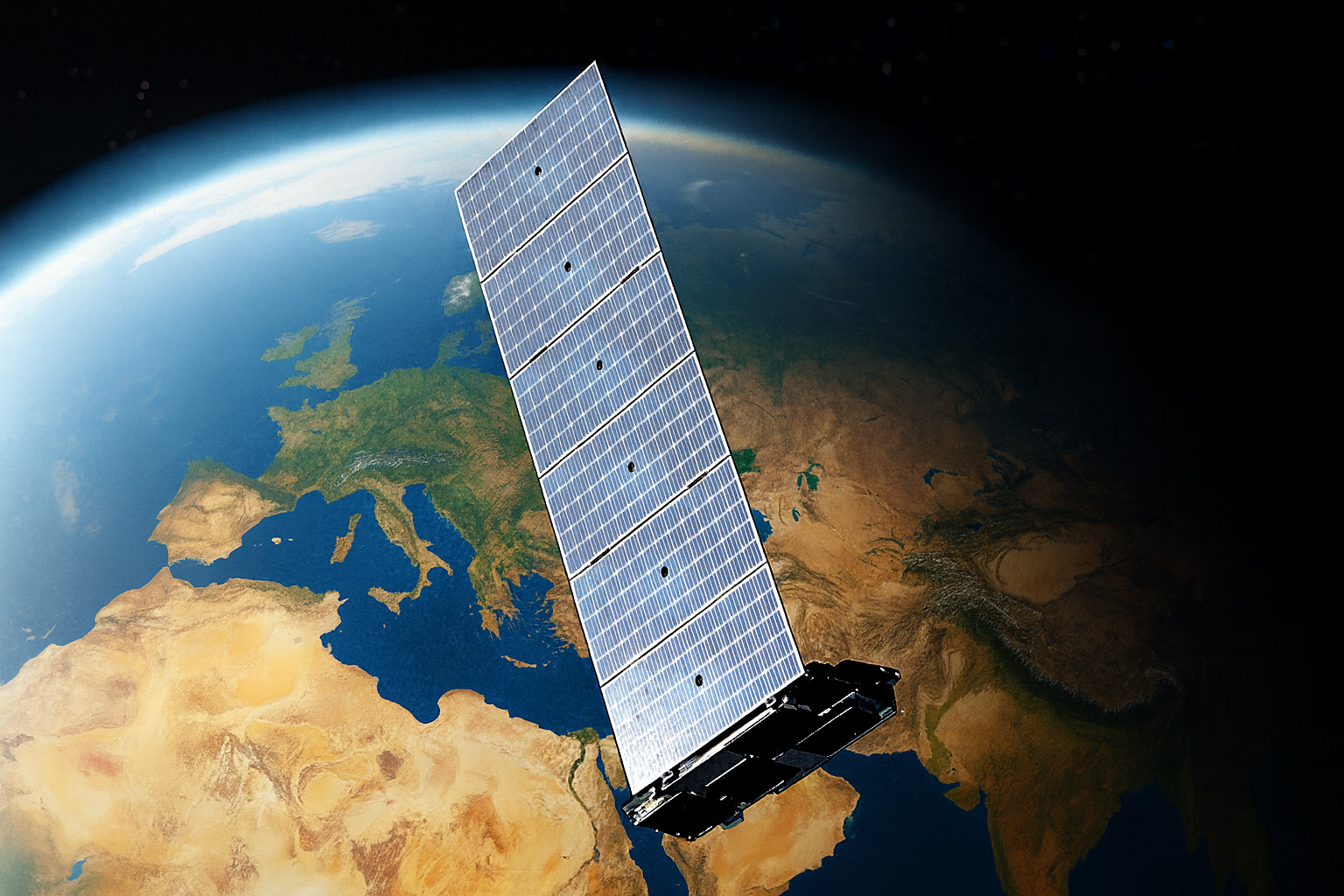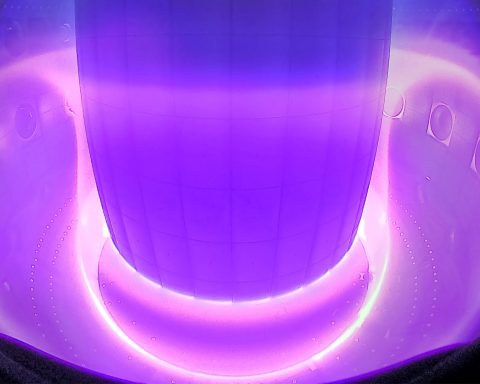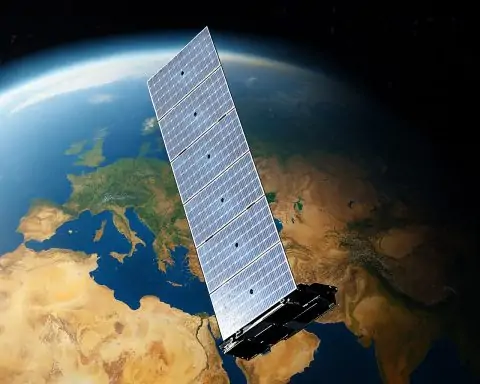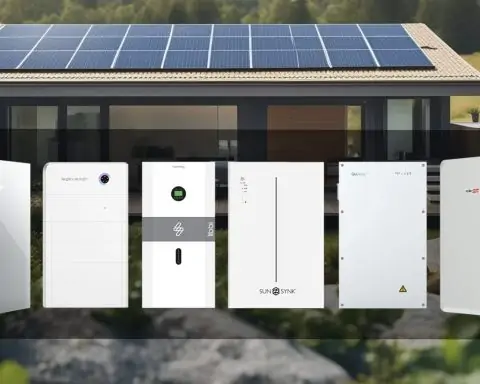- Reentries are now routine: Independent tracking shows ~1–2 Starlink satellites are re‑entering Earth’s atmosphere each day, with up to ~5 per day expected as mega‑constellations scale. EarthSky
- Many deorbits are intentional: SpaceX began a large, proactive deorbit of early V1 satellites in 2024 and reports hundreds “actively deorbiting” at any given time; a February 2025 status table lists 329 in active descent. Starlink
- Storms make things worse: During solar‑maximum conditions, storms inflate the upper atmosphere and can prematurely pull satellites down; a 2024 storm degraded Starlink service and a 2022 storm doomed ~40 newly launched Starlinks. Reuters
- Atmospheric side‑effects are emerging: New studies find aluminum‑oxide and other metals from reentries are accumulating in the stratosphere; modeling suggests reentry alumina could alter polar winds/temperatures and delay ozone recovery if reentries scale with planned fleets. AGU Newsroom
- Risk to people is low per satellite but not zero: A 2023 FAA report projects that by 2035, debris from large constellations could injure/kill one person every two years if fragments routinely survive reentry; SpaceX disputes this and says its new designs target <1 in 100 million casualty risk via highly demisable components and targeted ocean reentries. Federal Aviation Administration
- Orbits are crowded during descent: Starlink’s constellation executed ~144,000 collision‑avoidance maneuvers in just six months (Dec 2024–May 2025), illustrating the congestion satellites must navigate even on the way down. Aerospace America
- Rules are tightening: The FCC’s 5‑year rule now requires LEO satellites to complete post‑mission disposal (uncontrolled reentry) within five years, and the U.S. ODMSP caps human‑casualty risk at 1 in 10,000 for reentries. Federal Register
The big picture: “Falling” doesn’t mean failing — but the cadence is new
Starlink and rival mega‑constellations are designed to replace satellites on ~5‑year cycles and dispose of them by reentry so dead hardware doesn’t linger for decades. That means reentries — fiery streaks that look like slow “shooting stars” — are built into the business model. Observers now see about one to two Starlink reentries daily, and experts expect that rate to climb toward ~five per day as fleets expand. EarthSky
SpaceX has accelerated that cadence with a proactive retirement of some early‑generation craft after finding a common issue that could raise future failure risk. In a February 2025 snapshot, the company’s own status table listed 329 satellites actively deorbiting, alongside thousands still healthy — evidence that large fleets mean large, continuous disposal flows by design. Starlink
Why so many are coming down right now
- Planned end‑of‑life disposal. SpaceX publicly announced in 2024 it would deorbit ~100 older V1 satellites to “keep space safe and sustainable.” The company says these vehicles remain maneuverable during descent and assume conjunction‑avoidance responsibility as they pass through busy layers on the way down. Space
- Solar‑maximum drag. The current solar cycle has brought geomagnetic storms that puff up Earth’s upper atmosphere, boosting drag on low‑orbit satellites. In May 2024 a major storm degraded Starlink service, and in February 2022 a storm forced ~40 freshly launched Starlinks to reenter within days. Reuters
- Anomalies and off‑nominal deployments. A July 2024 second‑stage anomaly left one batch in very low perigee; SpaceX says all satellites from that flight reentered, and a 2.5‑kg fragment from a direct‑to‑cell Starlink was later recovered in Saskatchewan — prompting the company to refine its demisability modeling. Starlink
Why the rising reentry rate is a problem
1) Atmospheric chemistry we don’t fully understand
Reentering satellites vaporize metals that form nanoparticles and aerosols in the mesosphere/stratosphere. NOAA field measurements already find aluminum and other “exotic” metals embedded in ~10% of stratospheric sulfate particles, consistent with rocket and satellite reentry. PNAS
Models go further: an AGU‑published study estimates a typical 250‑kg satellite produces ~30 kg of aluminum‑oxide (alumina) upon demise, and projects hundreds of metric tons per year of alumina if mega‑constellations are fully deployed — enough to catalyze ozone‑destroying reactions and slow ozone‑layer recovery. NOAA modeling likewise warns that by ~2040, reentry alumina could alter polar vortex winds and warm parts of the middle atmosphere by ~1.5°C. The uncertainties are large, but the direction of travel is concerning. AGU Newsroom
2) Cumulative ground risk (tiny per satellite, non‑zero in aggregate)
Per U.S. standards, uncontrolled reentries must keep global casualty risk below 1 in 10,000; operators meet this by “design‑for‑demise” and, increasingly, targeted ocean reentries. Still, an FAA report to Congress estimated that by 2035 the annual casualty expectation could reach ~0.6 — about one person injured/killed every two years — if fragments frequently survive reentry from large constellations. SpaceX disputes the assumptions and claims <1 in 100 million casualty risk for newer Starlinks via more demisable parts and targeted ocean entries, but the FAA’s warning underscores the volume effect: small individual risks can add up across thousands of reentries. Federal Aviation Administration
3) Crowded descent lanes
Even coming down, satellites traverse busy orbital shells. Starlink’s own regulatory filings show ~144,404 collision‑avoidance maneuvers in six months (Dec 2024–May 2025), and the company has progressively tightened its maneuver trigger to reduce conjunction risk. Active deorbiting satellites must still steer around others until very low altitudes, increasing operational complexity for all players. Aerospace America
What SpaceX says it’s doing to lower the risks
SpaceX details a two‑pronged strategy: (a) design for demisability (limit surviving fragments and their impact energy far below regulatory thresholds), and (b) targeted reentry over empty ocean by maintaining attitude control down to ~125 km, guiding any potential debris ellipse away from populated routes. The company portrays its large‑scale early‑V1 deorbit as a conservative safety choice and says it expects zero failed satellites left in orbit by end‑2025. The Saskatchewan fragment from the 2024 anomaly prompted modeling updates to better predict component survival in edge cases. Starlink
What the rules now require — and why they still may not be enough
- The FCC’s 5‑year disposal rule compresses the timeline for LEO spacecraft to reenter once missions end, replacing the old 25‑year guideline. That reduces long‑lived debris, but increases the near‑term reentry cadence. Federal Register
- The U.S. Orbital Debris Mitigation Standard Practices cap reentry casualty risk at 1 in 10,000 and encourage targeted over random reentries when risk could exceed that threshold. orbitaldebris.jsc.nasa.gov
These policies address collision and debris persistence — critical goals — but they didn’t anticipate atmospheric chemistry becoming a limiting factor. As reentries scale, air‑quality and ozone impacts may become the next regulatory front. AGU Newsroom
So… is this “alarming”? A balanced take
- Yes, because of scale and uncertainty. One satellite is inconsequential; thousands per year are not. Evidence that reentry metals are already measurable in the stratosphere, plus modeling that points to possible wind, temperature, and ozone impacts, justifies concern and further study. PNAS
- But also, some of it is responsible housekeeping. Proactive deorbits and shorter disposal timelines are good for orbital safety, and targeted ocean reentries meaningfully lower ground risk. The Saskatchewan fragment shows no approach is perfect, but iterative design and better models can tighten margins. Starlink
What would reduce the downside risk
- Make targeted reentry the default for large constellations whenever casualty risk might exceed tiny thresholds — and verify performance with independent audits. orbitaldebris.jsc.nasa.gov
- R&D on demisable materials (less aluminum, more benign alloys), with component‑level impact‑energy targets like SpaceX’s <3‑Joule design goal extended across the sector. Starlink
- Fund atmospheric measurements and chemistry modeling (NOAA, NASA, academia) to close the knowledge gaps on alumina nanoparticles and their ozone/climate effects; refine reentry‑rate caps if needed. csl.noaa.gov
- Strengthen space‑traffic management, including shared, high‑precision ephemerides and automation standards so descending spacecraft can safely thread crowded shells. Aerospace America
- Harmonize global rules: the FCC’s 5‑year rule is a start; international norms should align disposal timelines, casualty‑risk accounting, and atmospheric‑impact reporting. Federal Register
Bottom line
Starlink’s deorbits are not a sign of imminent system failure; they are a feature of how mega‑constellations are maintained. What’s new — and legitimately worrisome — is how often reentries now happen and how little we know about their cumulative atmospheric effects. Keeping LEO usable will require faster, cleaner, better‑aimed reentries, more demisable hardware, and honest, well‑funded science to ensure the sky we use to connect the world doesn’t quietly change the world’s climate in return. EarthSky
Sources & further reading
- SpaceX: Starlink Satellite Demisability (targeted reentry, proactive V1 deorbits, Saskatchewan fragment case). Starlink
- EarthSky & AIAA: current and projected daily reentries; Starlink maneuver counts (Dec 2024–May 2025). EarthSky
- Space.com: SpaceX deorbiting 100 older satellites (2024). Space
- Reuters & Earth, Planets and Space: solar storms degrading service (2024) and 2022 storm‑driven Starlink losses. Reuters
- AGU press release & NOAA CSL: alumina from reentries — ozone/climate implications and 2040 scenarios. AGU Newsroom
- FAA Report to Congress (2023): ground casualty expectations from large‑constellation reentries by 2035. Federal Aviation Administration
- FCC & ODMSP: 5‑year disposal rule and 1‑in‑10,000 casualty‑risk standard for reentries. Federal Register
- Space.com Starlink facts page: constellation scale as of Sept. 2025. Space












